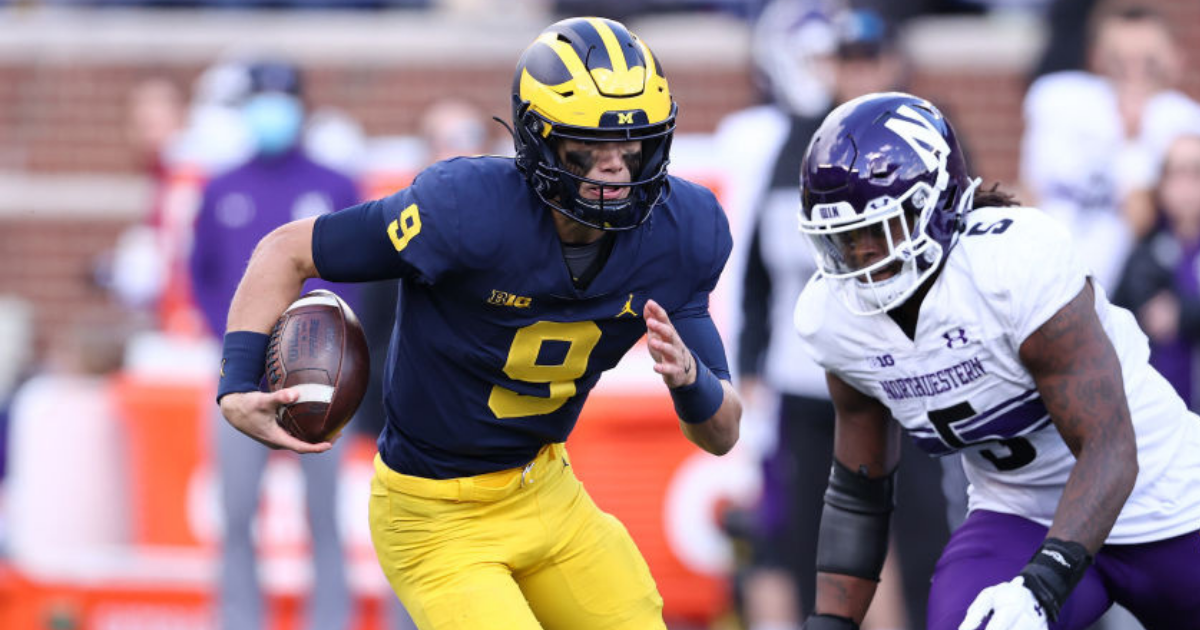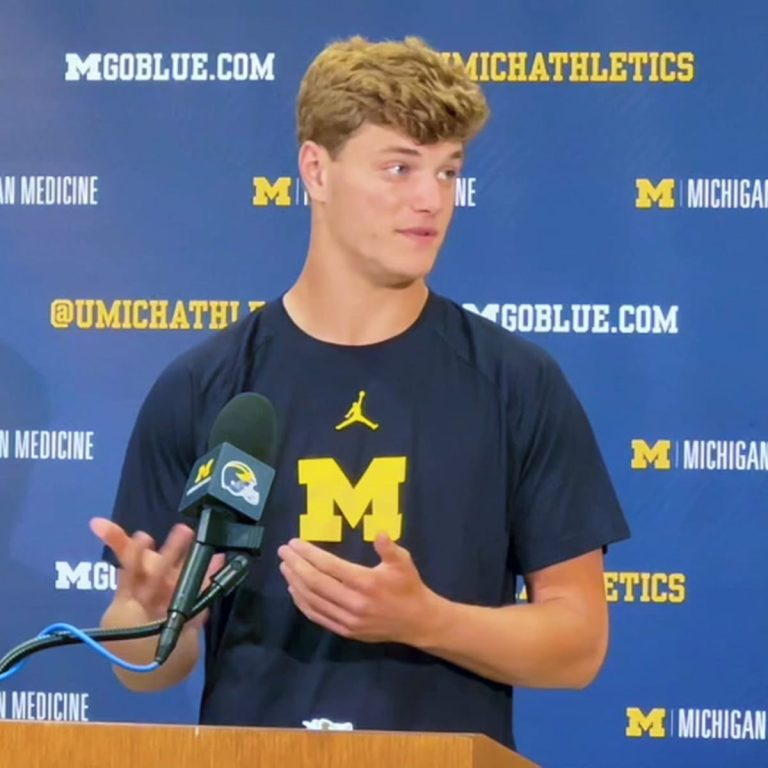JJ McCarthy’s Surgical History

JJ McCarthy, the rising star quarterback for the University of Michigan Wolverines, has faced a number of surgical procedures throughout his career. These surgeries have impacted his athletic performance, both in the short term and long term, and understanding their impact is crucial for analyzing his potential.
Surgical Timeline and Impact
The following timeline details the known surgical procedures JJ McCarthy has undergone, the reasons behind them, and their potential impact on his athletic performance.
- 2021: Right Shoulder Surgery – McCarthy underwent surgery on his right shoulder in 2021 to repair a torn labrum. This injury is common in athletes, particularly those who engage in throwing motions. The surgery aimed to repair the torn cartilage in the shoulder joint, which helps stabilize the joint and prevent further damage.
The recovery timeline for a torn labrum surgery can vary depending on the severity of the tear and the surgical technique used. However, athletes typically require several months of rehabilitation to regain full strength and mobility in the shoulder.
In the short term, this surgery could have impacted McCarthy’s throwing accuracy and power, as well as his overall mobility. However, with proper rehabilitation, he should have been able to return to his pre-injury level of performance. In the long term, the surgery could potentially help prevent further shoulder injuries, allowing McCarthy to maintain his athletic performance throughout his career. - 2022: Appendectomy – In 2022, McCarthy underwent an appendectomy, a common surgical procedure to remove the appendix. This surgery is usually performed in an emergency situation when the appendix becomes inflamed or infected.
The recovery timeline for an appendectomy is typically shorter than for a shoulder surgery, with most individuals returning to normal activities within a few weeks. While an appendectomy is a serious procedure, it is unlikely to have a significant long-term impact on athletic performance.
In the short term, McCarthy may have experienced some discomfort and limitations in his ability to train and compete. However, with proper recovery, he should have been able to return to his usual level of athletic performance relatively quickly.
Comparing Recovery Timelines
While both shoulder surgery and appendectomy require recovery time, the timelines for each are vastly different. The shoulder surgery, involving a complex repair of the labrum, typically requires a longer rehabilitation period, often several months, to regain full strength and mobility.
On the other hand, the appendectomy, a less invasive procedure, has a shorter recovery time, usually within a few weeks. This difference in recovery timelines is crucial for understanding the impact of these surgeries on McCarthy’s athletic performance.
For example, the shoulder surgery could have potentially impacted his ability to participate in spring practice and early-season training, while the appendectomy would have likely had a minimal impact on his overall training schedule.
Common Surgeries for Athletes Like JJ McCarthy: Jj Mccarthy Surgery

The life of a quarterback is fraught with risk. The constant threat of collisions and the intense physical demands of the position can lead to a variety of injuries. While some injuries can be managed conservatively, others require surgical intervention. Understanding the common surgeries quarterbacks undergo is crucial for both athletes and fans alike.
Common Surgeries for Quarterbacks
| Surgery Type | Common Injuries Treated | Average Recovery Time | Potential Long-Term Effects |
|---|---|---|---|
| Shoulder Surgery | Rotator cuff tears, labral tears, AC joint separations | 6-12 months | Decreased range of motion, instability, weakness |
| Elbow Surgery | Ulnar collateral ligament (UCL) tears (Tommy John surgery), dislocations | 9-12 months | Decreased throwing velocity, instability, arthritis |
| Knee Surgery | ACL tears, MCL tears, meniscus tears | 6-12 months | Decreased stability, range of motion, osteoarthritis |
| Ankle Surgery | High ankle sprains, ligament tears, fractures | 4-6 months | Decreased stability, range of motion, arthritis |
Jj mccarthy surgery – These surgeries are common in athletes who participate in high-impact sports like football. The recovery time and potential long-term effects can vary depending on the severity of the injury and the individual’s response to surgery and rehabilitation. For quarterbacks, these surgeries can have a significant impact on their ability to play at a high level.
Risks and Benefits of Common Quarterback Surgeries
Each surgery carries its own unique set of risks and benefits. For example, Tommy John surgery, which involves reconstructing the UCL ligament in the elbow, is a complex procedure with a lengthy recovery period. However, it is often necessary to restore throwing motion and stability.
The decision to undergo surgery is a complex one that should be made in consultation with a qualified orthopedic surgeon. The surgeon will consider the athlete’s individual circumstances, including their age, activity level, and the severity of their injury.
While surgery can be a necessary step in the recovery process, it is important to remember that it is not a guarantee of a full return to play. Rehabilitation is crucial after surgery, and athletes must be committed to following their doctor’s instructions to maximize their chances of a successful recovery.
The Role of Sports Medicine in JJ McCarthy’s Career

The world of professional sports, particularly high-impact sports like football, is a delicate dance between peak performance and the ever-present threat of injury. For athletes like JJ McCarthy, navigating this complex landscape requires a dedicated team of sports medicine professionals who act as guardians of their physical well-being. These specialists play a crucial role in preventing injuries, ensuring swift and effective treatment when they occur, and facilitating a safe and successful return to the field.
The Importance of Sports Medicine Professionals, Jj mccarthy surgery
Sports medicine professionals are integral to the success and longevity of athletes like JJ McCarthy. Their expertise encompasses a broad spectrum of knowledge and skills, allowing them to address the unique demands of athletic performance. From pre-season conditioning and injury prevention strategies to diagnosis, treatment, and rehabilitation, these specialists work in tandem with the athlete to optimize their physical potential while minimizing the risk of injury.
Roles of Sports Medicine Specialists
- Physicians: These medical professionals are at the forefront of injury diagnosis and treatment. They possess a deep understanding of the human body and its response to athletic stress. They perform physical examinations, order diagnostic tests, and develop individualized treatment plans. For example, a physician might diagnose a torn ACL in JJ McCarthy’s knee, recommend surgery, and oversee his post-operative rehabilitation.
- Physical Therapists: These specialists are crucial for rehabilitation and injury prevention. They work closely with athletes to restore range of motion, strength, and flexibility. They design customized exercise programs and utilize various therapeutic modalities to promote healing and return to play. For instance, a physical therapist might help JJ McCarthy regain his full range of motion in his shoulder after a rotator cuff injury, ensuring he can throw the ball with the same power and accuracy as before.
- Athletic Trainers: These professionals are the first responders on the field, providing immediate care for injuries. They assess the severity of injuries, administer first aid, and stabilize athletes before they are transported to the hospital. They also play a vital role in injury prevention, working with athletes to develop proper warm-up routines, stretching techniques, and training regimens. For example, an athletic trainer might help JJ McCarthy develop a personalized stretching routine to reduce the risk of hamstring strains during practice.
The Diagnosis and Treatment Process
- Initial Injury Assessment: When an athlete like JJ McCarthy sustains an injury, the first step is a comprehensive assessment by an athletic trainer. This involves gathering information about the injury, performing a physical examination, and determining the severity of the injury.
- Diagnosis: Based on the initial assessment, the athletic trainer may refer the athlete to a physician for further evaluation. The physician will conduct a thorough examination, order diagnostic tests such as X-rays, MRIs, or CT scans, and make a definitive diagnosis.
- Treatment Plan: Once a diagnosis is made, the physician will develop a treatment plan tailored to the specific injury and the athlete’s individual needs. This plan may include a combination of medications, physical therapy, surgery, or other interventions.
- Rehabilitation: Following treatment, the athlete will undergo a rigorous rehabilitation program under the guidance of a physical therapist. This program will focus on restoring strength, flexibility, and range of motion, gradually increasing the athlete’s activity level until they are fully recovered.
- Return to Play: The final stage of the process involves a gradual return to play. The physical therapist will monitor the athlete’s progress and work with the coaching staff to determine when they are ready to resume full participation in training and competition. The return to play decision is based on the athlete’s physical condition, functional capacity, and overall readiness.
JJ McCarthy’s recent surgery has understandably sparked concern among Michigan Wolverines fans, but the young quarterback’s recovery timeline is still uncertain. It’s a reminder of the fragility of the game, even for players like justin jefferson , who’s quickly becoming a star in the NFL.
With the right support and rehab, McCarthy has the potential to bounce back strong, just as Jefferson has done after facing his own challenges.
JJ McCarthy’s surgery will likely impact his availability for the upcoming season, leaving a void in the Vikings’ quarterback depth chart. To assess how the Vikings will handle this situation, it’s important to take a look at the vikings depth chart and identify potential replacements.
McCarthy’s recovery timeline will ultimately determine how the Vikings adjust their strategies for the season ahead.
